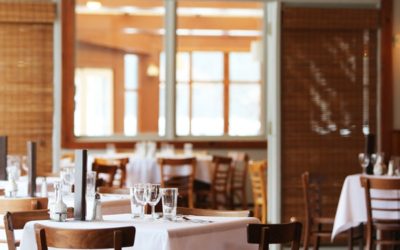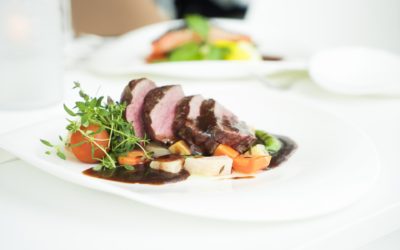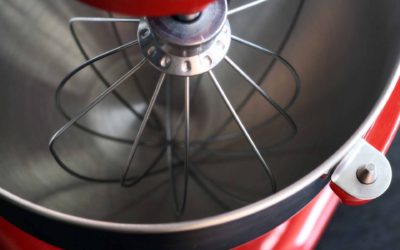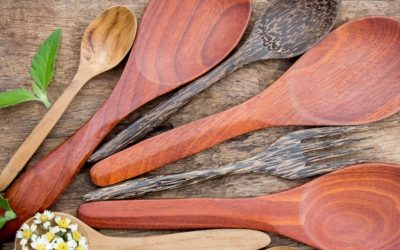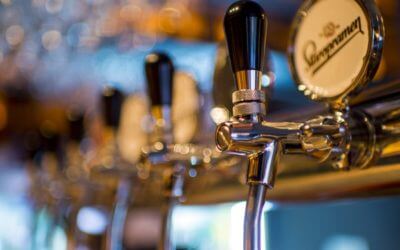The Oven Starter Guide: Convection or Conventional?
January 8, 2018Ready to get a new oven for your restaurant? This essential piece of kitchen equipment plays a central role in much of your cooking and baking, so it’s important to choose something that’s right for your restaurant’s needs.
When it comes to ovens, one question frequently arises: “Should I choose a convection oven or a conventional one, and what’s the difference anyway?”
Many people are in the dark when it comes to the best uses for each kind of oven. Well, today we’re going to dive into it so you can decide which kind of oven should join the rest of your kitchen equipment.
The one feature that sets convection ovens apart
If you can’t tell the difference between a convection and a conventional oven, you’re not alone. In fact, both types of kitchen equipment are very similar. They each have a single source of heat (typically at the bottom of the oven), but convection ovens have one feature that conventional ovens don’t have.
That feature? An extra fan and exhaust system. This system blows the hot air evenly through the whole oven during cooking. This gives rise to several benefits that many chefs love, making the convection oven a handy piece of kitchen equipment. However, it’s not for everyone. Check out our convection oven pros and cons before deciding on your new kitchen equipment.
What We Love about Convection Ovens as Kitchen Equipment
- Evenly cooked dishes. Because convection ovens fill the entire space evenly with heat, commercial kitchens using convection ovens produce more evenly cooked or baked dishes.
- Faster cooking. The consistent heat and lack of cold and hot air pockets make convection ovens efficient pieces of kitchen equipment. Most dishes cook faster in a convection oven.
- Food is crisper. A convection oven’s exhaust system vents moisture out of the oven, making your dishes nice and crisp. It’s a great piece of kitchen equipment for cooking dishes like crisp vegetables, oven fried chicken and potatoes.
What We Don’t Love about Convection Ovens
Convection ovens aren’t perfect for every recipe. It’s important to note this when choosing your new kitchen equipment. Here are a few downsides of convention ovens.
- Irregular rising. A convection ovens isn’t the best piece of kitchen equipment for recipes that involve rising. The surrounding heat can cook the outside of your bread or muffins before they are done rising, resulting in bumpy textures and lopsided batters. A conventional oven is a better choice if you do a lot of baking in your commercial kitchen.
- Drier food. The venting system we mentioned earlier is great for creating crisp fries and vegetables, but it’s not good news for moist foods like bread and soufflé. The lack of moisture within the oven can result in dried-out dishes. So if you cook dishes that need to rise or stay moist, a conventional oven is the best choice for your kitchen equipment.
When buying your next oven, think about the kinds of foods that make up your menus, and whether a convection or conventional oven is best suited to the job. Both types of ovens can come with electric or gas stoves, so you have the freedom of choosing what works best for you in both departments. If you need help deciding, we at Tipton Equipment are always happy to help.
5 Keys to Creating the Perfect Restaurant Seating Areas
Restaurants are about so much more than just food. From the setting and layout of your restaurant to your choice of colors, it takes a lot more than an appealing menu to keep diners coming back for more. When setting up your restaurant, booths and chairs are important...
5 Essential Buying Tips for Your Next Food Prep Work Table
The right foodservice equipment is pivotal to the efficiency of your kitchen. One of the most important types of foodservice equipment for any kitchen is the work table. With limited room on countertops available for your food prep needs, the cooking process can drag...
Tips for Keeping Your Commercial Sink Sparkling Clean
Your commercial kitchen, just like your personal kitchen, must be kept clean at all times. With all of the cooking and food processing you do, it is inevitable that your sink gets messy. Cleaning up your commercial kitchen is incomplete without proper cleaning of your...
Food-Cutting Secrets to Beautiful Dishes
In the restaurant industry, presentation is often said to be just as important as the food itself. Using the right knowledge, skills and restaurant supplies, you can incorporate creativity into your presentation, making guests feel that they are getting something...
Top Space-Saving Tips for Commercial Kitchens
Top Space-Saving Tips for Commercial Kitchens Space is always an important consideration when setting up a kitchen, and this is even truer for commercial kitchens. With a strong focus on functionality and the kitchen supplies that meet the needs of your commercial...
5 Ways to Get the Most Out of Your Mixer
No one wants to eat off of dirty or tarnished silverware. A stand mixer is a highly useful piece of kitchen equipment to invest in. Although this type of kitchen equipment does not usually come cheap, it can last a lifetime when properly cared for. Despite all your...
Restaurant Prep Tool Selection Simplified
What’s a restaurant kitchen without high-quality prep tools that can withstand the pressure of frequent use? Whether you already have a restaurant you’re running, or you’re just planning to launch one, one vital factor that could make or mar your business is how you...
Beginner’s Guide to Choosing a Commercial Ice Cream Freezer
Ice cream is a delicious and appealing desert treat for everyone, young or old. Having made the decision to sell ice cream to your customers, whether you have a restaurant, convenience store, or specialty ice cream parlor, it is time to begin stocking up on the right...
How to Choose the Right Kitchen Scales for Your Restaurant
A food scale is an essential item in every restaurant’s store of kitchen supplies. Designed to take the guesswork out of food measurement and maintain consistent food serving sizes, food scales are indispensable kitchen supplies in the commercial kitchen. With such a...
Beer Chilling Systems: Which Type Is Right for My Restaurant?
A refrigeration unit is integral to the functioning of any restaurant. Beers are best served cold - there’s no questioning that! But which beer chilling system is the best? From reach-in coolers to glycol chillers, a beer chilling system is an important piece of...
What Equipment Will I Need to run a Food Truck?
There’s a lot of planning that goes into starting your own food truck business. Before you hit the road with your delicious food offerings, you’ll need to fill up your truck with all the right foodservice equipment. Considering the lengthy list of possible items to be...
8 Types of Food Thermometers: What You Need To Know
Food thermometers are essential restaurant supplies for your commercial kitchen. They ensure that foods prepared in your commercial kitchen are cooked to the right temperature and held at that temperature for as long as necessary to kill any harmful bacteria. This...
How to Identify the Best Food Processor for Your Needs
Highly versatile and extremely efficient, food processors are designed to take away the hard work from repetitive kitchen activities. This type of cooking equipment can quickly become an invaluable tool in your kitchen. From chopping, to shredding, grinding, mincing,...
6 Keys to Choosing the Best Chafing Dishes for Your Restaurant
The chafing dish, also known as the chafer, is an essential piece of restaurant equipment for any establishment that wants to keep food hot. This type of restaurant equipment gets its name from the French word, chauffer, which means to heat, and it’s easy to see why....
Turning up the Dial on Commercial Fryers: How to Choose One for Your Restaurant
Fried food is a well-loved favorite. This is a fact. It also makes a fryer an important piece of equipment to have in your commercial kitchen. Just consider how many appetizers and sides require frying: onion rings, French fries, and fried green tomatoes are just a...

